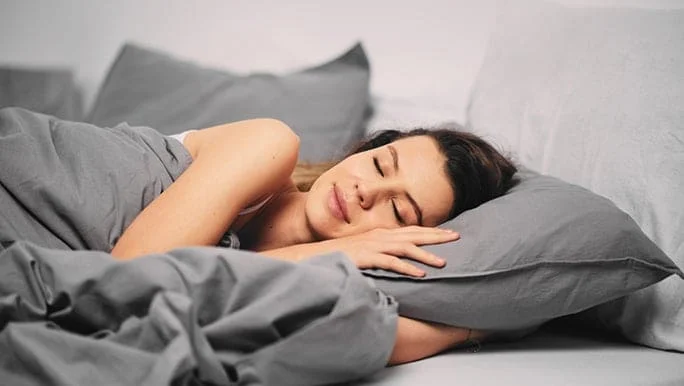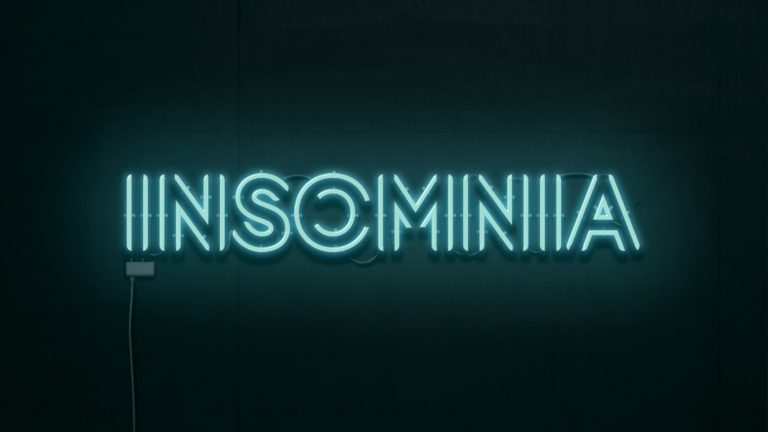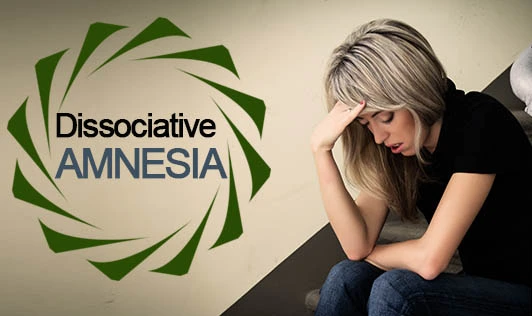How To Go To Sleep Faster?
Table of Contents
Introduction
Everybody experiences nights when falling asleep is difficult. There are several reasons why your sleep may be disturbed, including anxiety about current events, caffeine overuse in the afternoon, an overheated bedroom, or anything else.
In 10, 60, or 120 seconds, learn how to fall asleep.
You may be able to fall asleep more quickly by using relaxation methods, visualization exercises, and bettering your sleep hygiene.
Negative psychological and physiological consequences of sleep deprivation include:
- Perpetual tiredness, restlessness, or irritation
- Impaired efficiency, focus, and memory
- Greater likelihood of anxiety and sadness
- Obesity, diabetes, and heart disease risk are all on the rise.
Simply trying too hard to sleep can result in a cycle of nervous, worried energy that holds you awake. Your body finds it challenging to obey if your mind is having trouble falling asleep.
Three things must be taken into account before attempting to sleep:
- Sleeping hygiene
- A bedroom setup
- What do you do to spend your day?
We have a few anecdotal techniques to help you turn the switch if you’ve got these under control but are still having trouble going to sleep.
10 Seconds
The Military Method
- The military approach was most recently reintroduced to the public’s consciousness by Medium writer Sharon Ackman, who cited Lloyd Bud Winter’s 1981 article “Relax and Win: Championship Performance” as the source.
- Winter is credited with creating a relaxing method that allowed the American Navy preflight training airmen to nod off in just 120 seconds during World War II. Their judgment, reasoning, and decision-making have been affected by stress and lack of sleep.
- Even after drinking coffee and with guns firing all around them, pilots reportedly had a 96% success rate after nearly 6 weeks of practice.
- It’s significant to emphasize that there isn’t enough scientific evidence to back up these assertions. Additionally, it takes a whole 120 seconds to execute this sleeping technique. But it’s only the final 10 seconds.
The military method steps:
Your whole face, including the ones inside your mouth, should be relaxed.
- Allowing your hands to fall to your sides will help you relax your shoulders.
- Relax your chest as you breathe out.
- Release your thighs, calves, and legs.
- Ten seconds of focused visualization can help you relax.
- Try saying “don’t think” again for 10 seconds if that doesn’t work.
- You should nod out in ten seconds.
60 seconds
By concentrating on your breathing and calming your muscles, the two techniques that follow are intended to help you organize your thoughts. If you’re a beginner, these can require up to two minutes.
Method of breathing: 4-7-8
- This breathing technique was created by integrative medicine specialist Dr. Andrew Weil and depends on pranayama exercises. This meditation and visualization approach may work better at lulling you to sleep the more you use it.
- Consider consulting a doctor before starting if you have a respiratory ailment like asthma or COPD because this could make your symptoms worse.
- To get prepared for use place the tip of your tongue on the palate, just behind your two front teeth. Maintain your tongue there at all times, and if necessary, purse your lips.
How to complete a breathing cycle from 4-7-8:
- As you breathe out through your mouth, allow your lips to gently part and generate a whooshing noise.
- Inhale quietly through your nose while pressing your lips together. You mentally count to four.
- Take a seven-second breather.
- You should whoosh your breath out for 8 seconds.
- A new cycle starts when you take a breath in again.
- Finish four complete cycles. However, if you start to feel relaxed early, let your body sleep.
Progressive muscle relaxation (PMR)
- PMR, sometimes referred to as deep muscle relaxation, could aid in your relaxation.
- The idea is to contract your muscles, without straining them, and then release the tension by relaxing. Your body may become more peaceful as a result of this motion, which may also aid with insomnia.
- Before you begin, visualize the 4-7-8 breathing technique releasing the stress from your body.
Relaxation method:
- Lift your eyebrows as high as you can for five seconds. As a result, your forehead muscles will stiffen.
- As you start to relax your muscles, feel the tension disappear. Ten seconds, please.
- To make your cheeks tense, smile broadly. Take a 5-second hold. Relax.
- Wait ten seconds.
- Close your eyes and squint. Hold for 5 seconds. Relax.
- Wait ten seconds.
- So that you may comfortably stare up at the ceiling, tilt your head back a little. Hold for 5 seconds. Relax as your neck returns to the cushion.
- Wait ten seconds.
- Through your triceps to your chest, thighs to feet, continue working your way down the rest of your body.
- Allow yourself to nod off, even if the rest of your body isn’t entirely released and tight.
120 seconds
- Visualize a calm place
- Using your imagination may be a better option if counting is too stimulating.
- In a University of Oxford study from 2002, researchers discovered that participants who engaged in “imagery distraction” dozed off more quickly than those who had broad distraction or no instructions.
Image distraction
Alternative to counting sheep, try to picture a peaceful scene and all the associated emotions. You might picture a waterfall, the sounds of echoing water, and the smell of damp moss, for instance. The idea is to give this image some mental real estate to keep presleep thoughts, fears, and concerns from resurfacing.
Acupressure for sleep
Spirit gate
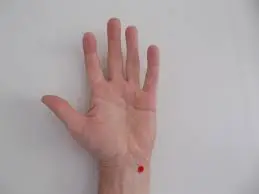
The method
- Locate the little, hollow area under your palm on the pinky side.
- Apply light pressure for two to three minutes in a circular or up-and-down motion.
- After holding the right side (behind of hand facing) for a short period, gently push down the left side of the point (palm facing).
- On the opposite wrist, repeat in the same location.
Inner frontier gate
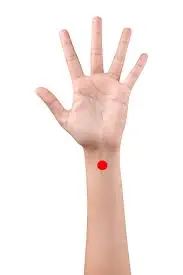
The method
- On one palm that is facing up, measure three finger widths below your wrist crease.
- Put consistent downward pressure between the two tendons with your thumb.
- You can massage when you feel your muscles relaxing, either in a circular or up-and-down movement.
Wind pool
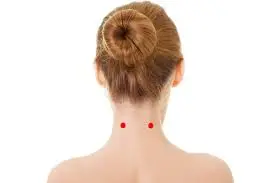
The method
- To form a cup with your hands, interlace your fingers (fingers out and palms touching).
- Your thumbs should be placed at the base of your skull, contacting the joint between your neck and your head.
- To massage this area, use a firm, deep pressure and move your hands in a circular or up-and-down motion.
- Deepen your breathing and see how your body unwinds when you exhale.
Other Advice:
Try to Stay Awake
Unexpectedly, trying to remain awake is a strategy used to hasten sleep. Even if pulling an unplanned all-nighter is not recommended, sitting in bed fretting about sleep will not make you fall asleep. Contrary to popular opinion, attempting to stay awake can lessen your anxiety about attempting to fall asleep.
Avoid looking at your phone or turning on any bright lights while trying this. Instead, attempt:
- consuming water
- Using ambient illumination while reading a book
- Putting yourself to the test by trying to stay awake in your dark bedroom
- Although falling asleep is an automatic process, taking your mind off the activity at hand can give your brain the break it needs for you to stop counting sheep.
Turn Down Your Tech
Many electronic devices create a blue light that mimics sunshine; while this is useful for your morning coffee, it can be detrimental to your ability to fall asleep. Of course, excessive screen time might also prevent you from getting enough sleep.
If you can’t completely put your electronics away for an hour before bed, think about turning them down. Reduce your screen time by:
- Playing music
- Listening to a soothing podcast
- Playing a recorded book
Check your device’s settings to see if there is a night mode if you find it difficult to put the screen away at night. This usually results in warmer colors on the screen, lessening the impact of blue light on sleep.
If You Don’t Immediately Fall Asleep, Don’t Get Alarmed
Many individuals make the error of attempting to nod off almost immediately, but getting from being fully awake to dozing off isn’t always as simple as switching a switch.
Instead, begin to unwind around an hour before night. Establish your bedroom gradually to promote sleep by doing the following:
- Turning down the lights
- Calming down your body
- Cooling down the bedroom
- Playing background music
Try Autogenic Training
The relaxing technique known as autogenic training was developed by German psychiatrist Johannes Heinrich Schultz.
Autogenic training uses a succession of sentences to induce a soothing effect and depends on hypnosis principles. To fall asleep rapidly, try the following autogenic training technique:
- While lying down, concentrate on your breathing and tell yourself, “I am completely calm.”
- Focus on your arms and tell yourself, at least six times, “My arms are very heavy,” “I am completely calm,” and so on.
- Repeat this chant for your legs, abdomen, forehead, and heart, among other bodily regions.
- When you are at ease, start to focus on your full body, which should also be at ease and warm.
Continue the previous steps if you haven’t fallen asleep yet until you’re prepared to open your eyes and take in the tranquility.
Autogenic training is well-researched to aid with various physical and emotional difficulties, including anxiety, according to the US Department of Veterans Affairs (VA). This makes it a useful technique for hastening sleep.
Take A Warm Bath or Shower
- This may be because a dip in warmth helps your body communicate that it is time for a restful night’s sleep. Although the sensation of frigid air upon leaving a warm bath or shower is something we all detest, it can improve your sleep.
- When you next feel like you could be up counting sheep, get in the tub for a relaxing soak. Even in warm weather, allowing yourself to take a hot bath or shower will help you sleep better.
Do Progressive Muscle Relaxation
- Progressive muscle relaxation, on the other hand, involves repeatedly tensing and then relaxing various muscle groups.
- Elevate your eyebrows to tense the muscles in your forehead, then let them loosen while concentrating on relaxing the muscles in your temples.
- Concentrate on how your eyelids fall over your eyes when you pinch them shut and then let them open.
- Concentrate on how each muscle in your face works together while you smile to feel the tightness in your cheeks and jaw, then let them relax.
- Continue doing this throughout the remainder of your body, finishing at your feet after working the muscles in your shoulders, arms, abdomen, and legs.
- While lying in this comfortable position, try to fall asleep.
Meditate Before Bed
According to research, meditation can be an effective treatment for insomnia. You can free your mind from the worries of the day and concentrate on the present moment by taking some time to meditate before going to bed. Before you go to sleep, use the meditation technique below.
- Select an appropriate sitting or lying position.
- Focus on taking slow, deep breaths while closing your eyes and slowing your breathing.
- Get thoughts out of your head. Refocus your breathing to drive away intrusive thoughts if you feel them approaching.
- Start by meditating for only five minutes, then increase the time as it becomes more comfortable.
- Many guided meditations might help you practice mindfulness and go to sleep more quickly if you have problems sitting still to meditate.
Avoid Caffeine Up to Six Hours Prior
Caffeine is a big factor in your inability to fall asleep even though it may be the MVP for getting you out of bed. So how far in advance should you stop drinking your usual cup of coffee?
Caffeine can affect the quality of your sleep up to six hours before bedtime, according to research. Therefore, if you usually go to bed at approximately 10 p.m., you should finish your final cup before 4 p.m.
Be aware of unexpected sources of caffeine, such as:
- Chocolate
- Protein bars with coffee or chai tea flavors
- Ice cream with a coffee or chocolate flavour
- Piping hot cocoa
- A few baked goodies
- Soda
If you consume excessive amounts of caffeine, it may even induce sleep. To satisfy your cravings for a beverage before bed without jeopardizing your sleep, use a decaffeinated beverage such as relaxing chamomile or lavender tea.
Create a Bedtime Routine
- You may set your internal body clock so that you know when to wind down for the night by establishing a regular bedtime routine. Your nighttime routine can consist of something as straightforward as listening to music before going to sleep, choosing your favorite sleeping position (whether it’s on your stomach, back, or side), or taking a nightly bath. What counts is whether your pattern is effective for you.
- Your bedtime regimen should reflect your choices for self-care. Although there isn’t a universally effective nighttime routine, your body will reward you if you follow a brief daily ritual.
Dim the Lights With a Glow Light
- A key indication that lets your body know what “mode” it should be in is light. Ambient yellow-toned light can assist in signaling to your body that it is time to retire whereas strong lights, such as blue light, are excellent for keeping you attentive.
- Utilizing a fading light, such as a Casper Glow Light, can assist your body in gradually preparing for sleep. After dinner, gradually turn down the lights until you’re ready for bed in your dark, cozy refuge. Doing this will yield the finest outcomes.
Do Yoga Before Bed
- A short session of relaxing yoga can give your body the reset it needs to unwind before bed if you end the day feeling restless. According to studies, practicing yoga before bed has improved the quality of persons with insomnia’s sleep by enabling them to doze off more quickly.
- Yoga encourages deep breathing and muscle relaxation, making it a terrific technique to calm your mind and body. Consider spending a few minutes in the child’s pose or the happy baby position before attempting to fall asleep the next time.
Put Socks On
- If you can’t sleep and don’t know why, you might be physically having cold feet. According to studies, when your feet are chilly, your blood vessels close, reducing blood flow and telling your brain to stay alert.
- Before going to bed, putting on a pair of socks can help warm your feet and cause the blood vessels in your feet to enlarge, telling your brain that it’s time for some dreamy sleep.
Turn off the Clock
- Looking at your clock while trying to fall asleep at night can make your sleep anxiety worse. Try rotating your clock around so you can’t see the time at night or turning it off completely.
- Make sure your phone is positioned face down and put on a sleep mask to completely block out all light sources and other distractions. You won’t be as tempted to check the clock or engage in late-night web browsing if you do this.
Consider Melatonin Supplements
- Melatonin pills are a possibility if you feel like all other sleep aids have failed. Melatonin, a hormone, helps the body get ready for sleep. If you use melatonin supplements as part of your nighttime routine, you might sleep more quickly.
- A fantastic alternative to sleeping pills is melatonin. To find out if melatonin pills are a good choice for you, consult your doctor first if you’re thinking about doing so.
Try a New Sleeping Position
- We’ve all had the unpleasant sensation of trying to sleep when uncomfortable. It could be time to try a different sleeping posture if you’re having trouble falling asleep.
- For instance, side sleepers may feel uncomfortable if they are not adequately supported. Try sleeping on your back if you often sleep on your side and find that you have trouble getting comfortable.
Play Relaxing Sounds
White noise is one type of soothing sound that might help restless sleepers relax and fall asleep more quickly. These noises not only help you relax but also block out other distractions like a bustling street.
White noise is background noise that has an even distribution of sounds across the acoustic spectrum.
Pink noise is background noise that favors low-frequency sounds over high-frequency ones.
Brown noise is background sound that only contains low-frequency components.
You can fall asleep quickly by using an ambient sound app on your phone or a noise machine.
Popular sleep-inducing noises include:
- Sound of rain
- Musical instruments
- A meditation course
Practice Sleep Hygiene
Sleep hygiene is a group of behaviors you do daily to promote restful sleep at night. Usual sleeping hygiene practices include:
- Only lying in bed when you’re asleep (don’t check your phone!).
- Avoiding naps.
- In the morning, get ready for bed as quickly as you can.
- Getting out of bed will help you sleep if you’re experiencing trouble.
- keeping a regular sleep schedule.
- Make sure your bed is solely used for sleeping to begin practicing good sleep hygiene. Consider curling up on the couch until it’s time for bed rather than retiring to bed to watch some TV.
Get Enough Exercise During the Day
- If you have problems falling asleep at night regularly, you might need to work harder during the day. Light exercise may enhance your capacity to sleep at night, according to a pilot study.
- You don’t have to become a gym jock to take advantage of these advantages. You can improve your sleep by making small changes, like going for a brisk stroll in the morning. Exercise can keep you awake if done too close to bedtime, though. To fall asleep faster, make sure you exercise more than 90 minutes before bed.
Increase Sunlight Exposure
- You can fall asleep more quickly at night by exposing yourself to more sunlight or strong light throughout the day. Bright light has been shown in studies to assist in controlling your circadian rhythm, which determines when your body should get up and go to sleep.
- To benefit from this, make sure you spend a few minutes outside each day and keep your bedroom dark at night. When you start dimming your lights, your body will recognize that it is time for bed because this simulates sunrise and sunset.
- Consider speaking with a sleep professional if, despite attempting all of these strategies, you still need help falling asleep. This will enable them to accurately identify the underlying reason, be it persistent insomnia or another sleep issue.
Water During the Day
Researchers discovered that people who were dehydrated slept for fewer hours.
Consider increasing your water consumption to make sure you keep hydrated. One of the most excellent beverages for staying hydrated is this one.
You can boost your consumption of water by:
- Including fruit in your water, such as lemons or limes.
- You are carrying along water bottles that you can fill up whenever necessary.
- Selecting water as your main beverage choice.
- Providing water with meals.
- Increased water consumption earlier in the day is another way to have a good night’s sleep. A heavy night of drinking can cause you to wake up in the middle of the night to relive your experiences.
Summary
To fall asleep faster, it’s essential to establish a consistent bedtime routine and create a sleep-conducive environment. Start by setting a regular sleep schedule, ensuring you go to bed and wake up at the same times each day, even on weekends.
Prioritize relaxation in the hour leading up to bedtime by avoiding stimulating activities and screens. Rather, relax by reading, practicing meditation, or taking a warm bath. Make sure the room is cool and quiet, and these three things will improve your sleep. Limit caffeine and heavy meals close to bedtime, and consider using relaxation techniques like deep breathing or progressive muscle relaxation to calm your mind.
Finally, if sleep problems persist, consult a healthcare professional to rule out underlying issues like insomnia or sleep disorders. By incorporating these habits into your routine, you can increase your chances of falling asleep faster and enjoying a more restful night’s rest.
FAQs
Falling asleep quickly is important because it can lead to more restful and higher-quality sleep. When you spend less time lying awake in bed, you can maximize the time your body has to rest and recover.
Common causes include stress, anxiety, an irregular sleep schedule, excessive caffeine or alcohol consumption, electronic device use before bedtime, and an uncomfortable sleep environment.
It’s best to consult with a healthcare professional before using sleep aids or medication. They can assist you in deciding whether it is a suitable and safe alternative for you. These should generally be used as a last resort and only under medical supervision.
Establish a regular bedtime and wake-up time on weekends as well.
Avoid sleeping in or taking long daytime naps, as they can disrupt your sleep patterns.
Gradually adjust your bedtime and wake time if needed to align with your desired schedule.
Practice mindfulness or journaling to help clear your mind. Write down your thoughts and concerns to address them during the day, rather than at bedtime.
References:
Yuen, C. (2023, June 27). How to Fall Asleep in 10, 60, or 120 Seconds. Healthline. https://www.healthline.com/health/healthy-sleep/fall-asleep-fast#60-seconds
Sievers, M. (2023, April 7). How to Fall Asleep Fast: 26 Tips to Beat Insomnia. Casper Blog. https://casper.com/blog/how-to-fall-asleep-fast/

